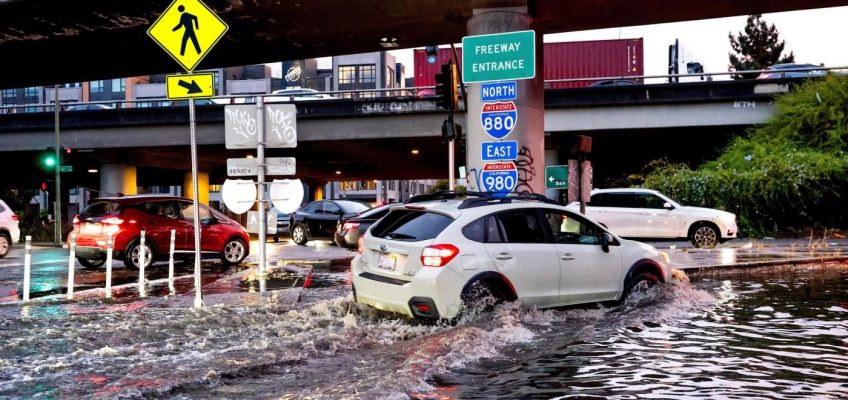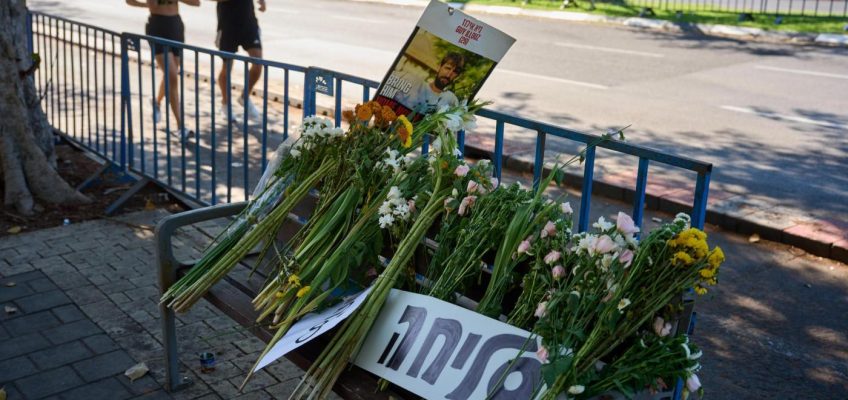Editor’s Note: This story is a collaboration between Puente News Collaborative and the Texas Observer.
As the healthcare workers approach the small collection of makeshift shelters along the train tracks that cut through the northern Mexico industrial hub of Ciudad Juárez, the people who gather in this place to use drugs prepare for their arrival.
They’re ready to exchange used syringes for clean ones, a practice that helps prevent injury and disease. They prepare their kits in anticipation of the small packets of distilled water in which they can more safely cook heroin. The workers for Programa Compañeros, a nonprofit that provides supplies and assistance to vulnerable populations in Juárez, have invested years building relationships with people who use heroin in Juárez’s picaderos (a colloquial term equivalent to “shooting galleries”). Some of these locations are essentially tolerated by local authorities, allowing Programa Compañeros to develop established services; the group calls these “drug consumption sites.”
But even at sites where there’s little effort at coordinated narcotics enforcement, gathering in one place leaves people vulnerable to abuses from Mexico’s military and police forces, who are increasingly flooding the city of 1.5 million across the Rio Grande from El Paso.
The border has long been one of the most heavily policed parts of both the United States and Mexico. Since taking office this year, U.S. President Donald Trump has deployed additional troops to the already-militarized region and put pressure on Mexican President Claudia Sheinbaum to do the same. Research about past border deployments has shown that they make it more difficult for health workers on both sides of the border to reach vulnerable populations.
An older man receives a heroin injection, with a clean syringe provided by Programa Compañeros, from another individual also experiencing addiction in September in Ciudad Juárez. (Omar Ornelas)
A 38-year-old man at the consumption site by the tracks who identified himself only as Erick said that, when he first met the Programa Compañeros outreach workers, he was suspicious of the men in jeans and slacks and fresh T-shirts offering needles. “I thought they were like, honestly, some kind of police or something like that,” Erick said.
He could hardly be blamed for thinking that. The presence of military forces in Juárez is obvious throughout the city. The skeleton of what’s called the Torre Centinela, the future command center for the state of Chihuahua’s massive surveillance program, rises above Juárez’s downtown. White Guardia Nacional pickups with machine guns mounted behind the cab and masked soldiers crammed in the bed can be seen cruising the city. All-black Mexican army trucks patrol as well. Erick said security forces do show up at the site—but rarely to make arrests.
“They come here, and they get the guy that’s selling and beat him up,” Erick said. “The cops and the military. If you have money on you, you’d better hide it, because if they stop you here and you have money in your pockets, they’ll take it away from you.”
Erick grew up in Juárez and crossed the border at age 19, he said, living first in El Paso and later in New Mexico. Two years ago, after an arrest for driving while intoxicated, he said he was deported to Juárez. Erick had been involved in a gang in New Mexico and before his deportation was jailed at an immigration detention center in the West Texas town of Pecos, where he started using heroin. Back in Juárez after a 15-year absence, the only community he could find was in the picaderos.
Despite his suspicions, Programa Compañeros was already well known among the other heroin users he’d found. The organization’s staff say their nonjudgmental approach and willingness to provide supplies that people who use drugs want, like needles, helps them build trust and direct people to other services. Erick said he now goes to the group’s headquarters, where services like showers, clean clothes, counseling, and medical and dental care are offered.
For nearly 40 years, Programa Compañeros has practiced harm reduction, a broadly defined strategy for providing services to people who use drugs without attaching stigma or strict parameters and involving people who use drugs in planning and implementing that strategy. Fentanyl, a powerful synthetic opioid often produced in Mexico to meet U.S. demand, is now on the streets in that country as well, creating a public health crisis. In May, a batch of powdered cocaine tainted with fentanyl killed five people in Juárez over the course of two hours, local officials said.
Juárez’s location on the border with Texas creates unique challenges for providing harm-reduction services. Migrants from all over Mexico and the globe flock to the border, fleeing violence or instability and looking for work, either in Juárez or in the United States. There’s also the community of recent deportees, like Erick, oftentimes dropped into a country they barely know. Health workers in the region must provide services to a particularly vulnerable population whose members sometimes speak little or no Spanish. The increased militarization of the border then pushes those vulnerable populations further into the shadows and makes them harder to reach, health workers and activists say.
The atmosphere of militarization and surveillance is pervasive on both sides of the border. This only increased in February, when Mexico launched Operativo Espejo to “mirror” the militarization on the U.S. side. The effort, both governments said, was aimed at deterring both immigration and drug smuggling. In Mexico, Sheinbaum deployed 10,000 troops to the border, with nearly 2,000 to Juárez.
The border “is hypermilitarized, as we’ve never seen,” said Dr. Patricia Gonzalez Zuniga, a physician who’s done research and volunteer outreach in Tijuana, across the border from San Diego, California. “Now if you go, like, to a shopping center, just to the store or a market, you will find a lot of military trucks full of soldiers. I work with people who are homeless, and the stories that they told us are very awful.”
Whether it involves distributing clean needles and the overdose-reversal drug naloxone, or just providing food, clean clothes, and medical care, harm reduction focuses on diminishing the negative impacts of drug use rather than insisting that people quit. Research has found that needle exchanges not only reduce the spread of disease but are a gateway to other services; people who use syringe exchanges are more likely to enter recovery, research has found.
The El Paso-Ciudad Juárez region, which includes parts of Texas and New Mexico and the Mexican state of Chihuahua, offers a stark example of the opportunities and challenges harm-reduction workers face along the border.
The region suffers from a lack of investment. “We’ve been underfunded,” said Julia Lechuga, an associate professor of health psychology at the City University of New York’s Hunter College who has conducted research about harm reduction in El Paso and Juárez. “Frankly, it’s an uphill battle. There are not enough resources to provide harm reduction and provide intervention and treatment.”
A substance user prepares for an injection after receiving clean syringes. (Omar Ornelas)
The Trump administration’s spending cuts, which have targeted progressive policies including harm reduction, have shrunk resources for programs nationwide. The State of Texas has targeted services for immigrants, which creates uncertainty for organizations working in border communities, which have large undocumented populations.
“Every organization in El Paso that provides substance-use services has lost funding, and it has already had an impact in our ability to serve,” said Jamie Bailey, a peer recovery specialist and the co-chair and co-founder of the El Paso Harm Reduction Alliance. “It’s a very difficult position to be in because you want to continue to be able to serve your community … and you also don’t want to turn away people that need help based on their immigration status.”
But being on the border also provides some benefits. Just as ideas about treatment and outreach flow back and forth between Texas, New Mexico, and Chihuahua, so does lifesaving medication. Programa Compañeros, for instance, works its way around Mexico’s restrictions on naloxone by accepting donations from groups in Texas.
In April, Programa Compañeros workers Julián Rojas and David Montelongo picked their way along a rocky path running between a cinder-block wall and the train tracks that pass by the consumption site in Juárez.
Rojas carried a black backpack with the supplies for their day’s mission. Montelongo carried a red plastic container for the used needles they’d be collecting. Over the course of the day, they stopped at a house in a residential neighborhood and an abandoned building in the city’s historic downtown. While passing through the heavily patrolled centro, close to bridges that connect Juárez to El Paso, they were cautious, subtly exchanging needles. When asked if he thought syringe exchanges encourage people to try heroin, a criticism levied by opponents, Rojas, who said he has personal experience with drug use, scoffed. It’s not a question of whether people will use, he said. It’s a question of whether they’ll use safely.
Programa Compañeros workers said the worst period for militarization in Juárez was during the 2010s, when the Mexican government deployed troops to curb open warfare between criminal organizations. They heard from people who’d been beaten with boards and stabbed with their own syringes by Mexican security forces.
“The violence still persists, mainly by the municipal police, the National Guard at times,” Rojas said. “But not with the same intensity as in those years.”
Daniel Vela Carrazco, a case worker and registered nurse with Programa Compañeros, exchanges syringes with people who use drugs. (Omar Ornelas)
But if targeting of the picaderos for shakedowns continues, and the people who use drugs there are forced further into the shadows, it will be harder for Programa Compañeros to reach people who need its services. The new troop deployments have raised concern among people who work in harm reduction that violence against people who use drugs will spike. In 2023, Lechuga, the health psychology professor, published a study that found the 2010s military deployment in Juárez “promoted engagement in behaviors that increased drug use and health harms, including HIV risk.” The Mexican military deployment’s impact also spilled over the border, she said in an interview, as increased militarization on the Mexican side led to “increasing harsh police tactics” on the U.S. side.
In El Paso, both the state and federal governments have rolled out highly publicized border enforcement operations in recent years. Earlier this year, videos circulated online purporting to show immigration officials knocking on doors in El Paso. News stations showed immigrants crowded onto deportation flights out of Fort Bliss, the 1,700-square-mile U.S. Army post headquartered on the city’s edge. In March, the Trump administration deployed armored combat vehicles to the borderlands. The under-construction Torre Centinela project will share information with Texas law enforcement and is visible from El Paso.
All that can rattle drug users who may have suffered mistreatment from officers or may be experiencing paranoia, said Joey Montes, outreach lead at the Recovery Alliance of El Paso.
“I could imagine what they’re feeling when they see actual authorities out there in vests with their badges, big guns, just roaming the streets,” Montes said. “So I’m pretty sure that’s scaring a lot of them into hiding.”
The post Border Barriers to Harm Reduction appeared first on The Texas Observer.




